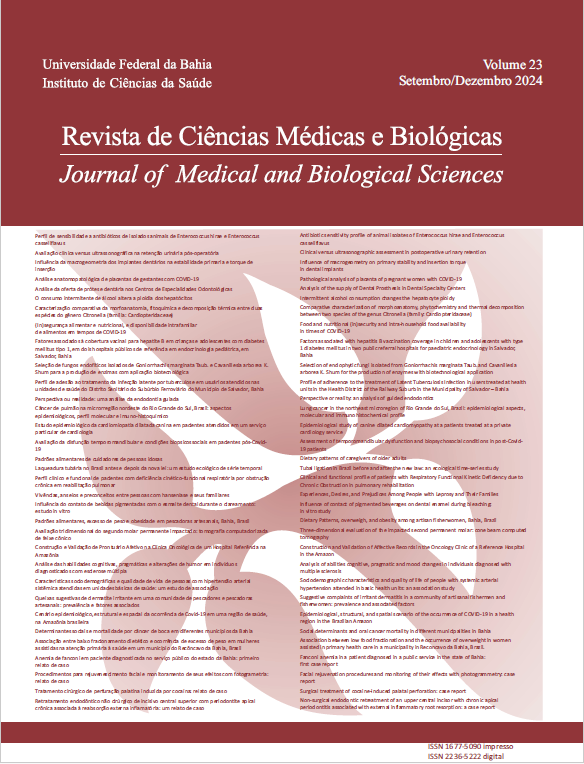INFLUÊNCIA DO CONTATO DE BEBIDAS PIGMENTADAS COM O ESMALTE DENTAL DURANTE O CLAREAMENTO: ESTUDO IN VITRO
DOI:
https://doi.org/10.9771/cmbio.v23i3.59224Keywords:
Clareamento dental, Cor, Esmalte dentário, Peróxido de CarbamidaAbstract
Introduction: Home bleaching is one of the most performed procedures in dental offices. However, there are still doubts about what can or cannot be consumed by patients to not interfere with the treatment. Objective: to assess the effect of consumption of dark beverages during home bleaching on the color of dental enamel. Methods: Eighty fragments of bovine dental enamel were obtained and randomly distributed into 8 experimental groups (n=10) according to the staining solution used: artificial saliva (Groups 1 and 5), cola-type soft drink (Groups 2 and 6), coffee (Groups 3 and 7), and red wine (Groups 4 and 8). After 14 days of staining, the samples underwent home dental whitening treatment (16% carbamide peroxide) for 21 days. During bleaching, samples from Groups 5, 6, 7, and 8 were immersed daily in their respective staining solutions for 5 minutes. Color analysis of the enamel fragments was performed before and after staining, and after dental whitening. Data were analyzed using the Student's t-test (α=5%). Results: the color variation for samples from Groups 1 and 5, Groups 2 and 6, and Groups 3 and 7 was similar. However, the use of red wine altered the color of dental enamel at the end of the treatment. Conclusion: Although the use of soft drink and coffee during whitening did not interfere with the treatment, red wine altered the outcome of dental whitening.
Downloads
Downloads
Published
How to Cite
Issue
Section
License
Copyright (c) 2024 Journal of Medical and Biological Sciences

This work is licensed under a Creative Commons Attribution 4.0 International License.
The Journal of Medical and Biological Sciences reserves all copyrights of published works, including translations, allowing, however, their subsequent reproduction as transcription, with proper citation of source, through the Creative Commons license. The periodical has free and free access.


